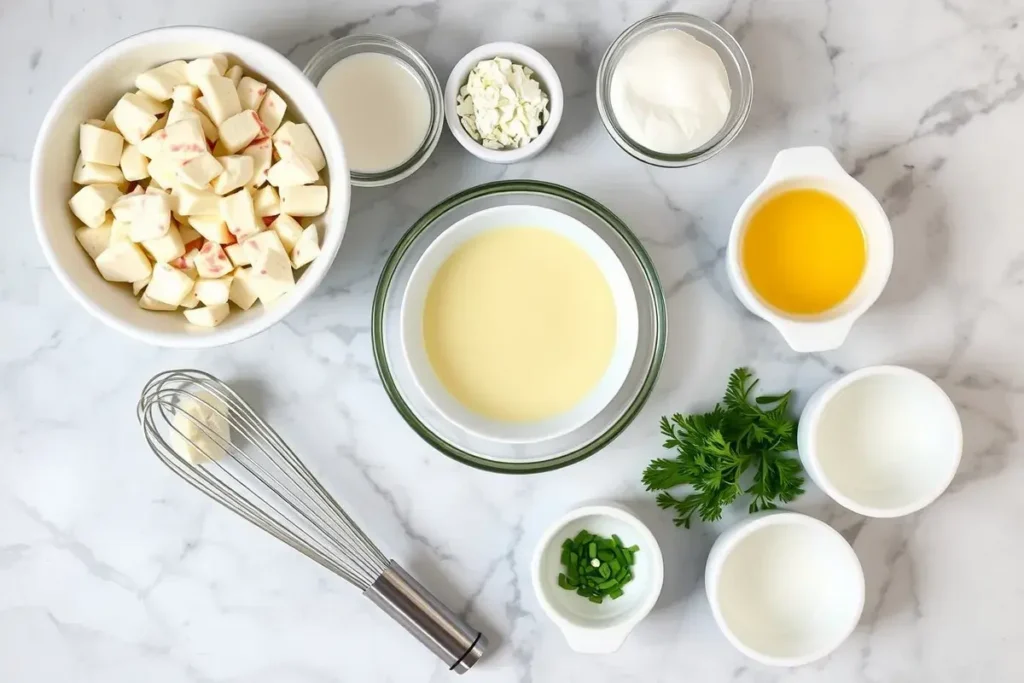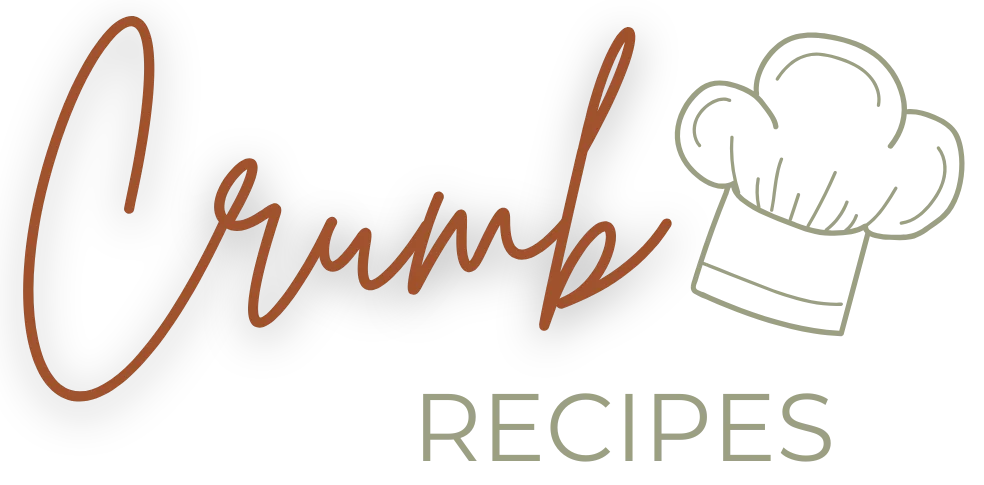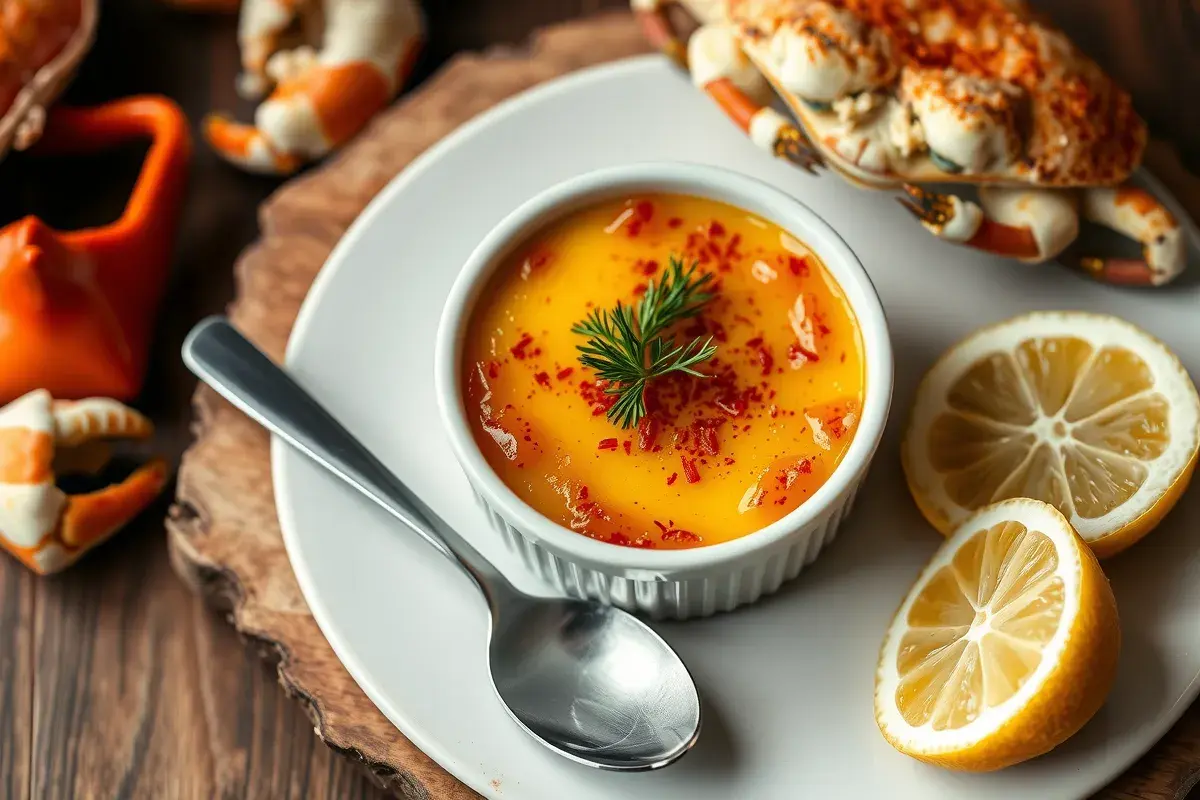Seafood lovers often seek new and creative recipes to celebrate the ocean’s best ingredients. One such dish, crab brulee recipe, places crabmeat in the spotlight by transforming a classic French dessert—crème brûlée—into a savory masterpiece. Although it might sound intimidating, you can easily create this show-stopping crab brulee recipe in your own kitchen.
In this article, you will discover how to gather the right ingredients, master the process, and avoid common mistakes. Furthermore, you will learn interesting facts about its origins, find variations to suit your taste, and explore perfect pairings to serve alongside. Read on, and get ready to wow your guests at the next family dinner or special gathering!
What Is Crab Brulee?
Crab brulee recipe fuses sweet crabmeat with the creamy base of a traditional custard. Instead of vanilla flavors, you incorporate savory elements, such as herbs and mild aromatics. Finally, you top the dish with caramelized sugar (or even cheese) to form a satisfying crust. However, do not be fooled by its fancy look: you can achieve perfect results using simple techniques at home.
This dish delights both the eyes and the taste buds. On one hand, you have smooth custard with chunks of succulent crab. On the other hand, you have a golden, crackly shell on top. Moreover, the adaptable nature of this recipe allows for endless creative spins, such as adding a bit of spice or citrus zest. With just a few tweaks, you can tailor the final taste to your personal preference.
Origins of the Savory Crab Crème Brûlée Dish
Although crème brûlée usually appears as a sweet dessert, modern chefs have successfully given it a savory twist. Therefore, the crab brulee recipe emerged as an inspired fusion, celebrating the naturally sweet flavor of crab in a traditional French technique.
Evolution from Classic Crème Brûlée
Crème brûlée traces back to the 17th century in France. It starts with a velvety custard enriched with egg yolks, cream, and vanilla beans, then crowned with caramelized sugar. However, in recent years, chefs began exploring savory counterparts to the beloved sweet custard. By replacing vanilla with other flavors—like seafood stock, herbs, or spices—cooks realized that crab harmonized delightfully with the rich texture of the custard.
- From Dessert to Entrée: Inventive cooking philosophies encouraged experimenting with sweetness and saltiness.
- Key Adaptation: Crab’s natural sweetness lends itself well to a classic custard consistency.
- Signature Crunch: Caramelized sugar or a briny cheese topping offers the same textural contrast found in the sweet version.
Regional Influences and Adaptations
Different regions have put their personal stamp on the crab brulee recipe. For example, in coastal American areas, fresh Dungeness or blue crab is often chosen for its delicate, sweet taste. Meanwhile, French chefs may stick to classic herbs like chervil, chives, or tarragon to highlight the seafood aspect. In an Asian fusion adaptation, you might encounter hints of ginger, lemongrass, or a dash of chili to boost the overall flavor.
Regardless of the specific twist, the main concept remains the same: pair the creamy custard texture with savory crab and finish with a crisp, caramelized top. Thus, both flavor and flair set this dish apart from simpler seafood offerings.
Why This Crab Torch Dish Is a Must-Try
If you are contemplating adding crab brulee recipe to your repertoire, consider these compelling reasons:
- Unique Flavor Combo
The smooth custard mingles with the delicate sweetness of crab. Furthermore, a crunchy layer on top provides a compelling contrast. - Show-Stopping Presentation
Guests will be impressed by the golden surface of the crab torch dish, and they will love cracking through the crust with a spoon. - Surprisingly Accessible
Most supermarkets carry lump crabmeat, and the rest of the ingredients—cream, eggs, sugar—are kitchen staples. - Customizable
Feel free to adjust the spice level, add your choice of herbs, or even incorporate a squeeze of citrus juice. In other words, you can create your own signature version. - Conversation Starter
Transform a simple seafood dinner into an elevated event. Crab brulee recipe showcases both creativity and refined taste.
Ingredient Deep Dive: Crab brulee recipe

To craft the best crab brulee recipe, you need a solid understanding of the primary components. Therefore, let us examine each ingredient and see how it contributes to the final product.
Selecting the Best Crabmeat
Freshness is key when it comes to crab. Choose fresh lump or jumbo lump crab if available, since it offers larger pieces of meat with a sweet and clean taste. Nonetheless, if fresh crab is not an option, high-quality canned or frozen crabmeat can suffice. Remember to drain it well to avoid a watery custard.
- Blue Crab: Known for a tender, delicate taste.
- Dungeness Crab: Rich, slightly buttery flavor often preferred on the West Coast.
- King Crab: A pricier option with meaty chunks and bold taste.
Heavy Cream Essentials
Heavy cream, with around 36% fat content, forms the silky base of the custard. Its high fat content supports the smooth, luxurious texture crab crème brûlée dish demands. However, you can experiment with half-and-half or dairy-free alternatives if needed. Just note that the custard will be lighter or slightly thinner.
- Tip: Infuse the cream with herbs like thyme or dill for deeper flavor. Simply warm the cream gently with the herbs, then strain out solids before using.
Eggs for Structure
Egg yolks help thicken the custard and provide richness. Some recipes include whole eggs in addition to yolks for extra body. However, be cautious: over-whisking will incorporate too much air, leading to a bubbly texture instead of a smooth finish.
Seasonings and Aromatics
Balance is essential because crab is both sweet and mildly salty. Therefore, many cooks add:
- Shallots or onions for mild sweetness
- Garlic for savory depth
- Herbs such as chives, parsley, or tarragon
- Cayenne pepper or paprika for subtle heat
Keep seasonings in moderation. You want to highlight the crab’s flavor, not overshadow it.
Sugar for Caramelization
A crab brulee recipe typically ends with a sprinkle of sugar that is caramelized under a torch. Nonetheless, you can use a blowtorch or oven broiler to create that golden crust. For an even crisper experience, try raw sugar or turbinado sugar.

Optional Garnishes
Give your savory crab custard a final flourish:
- Herb Sprigs: Adds brightness without overpowering
- Caviar: Offers a salty accent for extra elegance
- Citrus Zest: Brightens the dish with a touch of acidity
Step-by-Step Guide: Crafting Your Crab Brulee Recipe
Below, you will find a straightforward method to create a memorable crab brulee recipe. Follow each step closely to ensure stellar results. Moreover, do not rush the process—custards reward patience.
Ingredients List of crab brulee recipe
- 1 pound lump crabmeat (drained and picked for shells)
- 2 cups heavy cream
- 4 large egg yolks (or 2 whole eggs + 2 yolks)
- 1 shallot, finely chopped (optional)
- 1 garlic clove, minced (optional)
- 1 teaspoon salt
- ¼ teaspoon black pepper
- Pinch of cayenne (optional)
- 4 tablespoons sugar (for topping, adjust to taste)
- Chives or microgreens for garnish
Essential Equipment
- Mixing bowl
- Whisk
- Ramekins (4–6, based on size)
- Baking dish or roasting pan
- Torch (kitchen torch) or oven broiler
Preparations and Assembly
- Preheat the Oven
- Set your oven to 325°F (160°C). This lower temperature helps the custard bake gently.
- Place the ramekins in a roasting pan, leaving space for the water bath.
- Sauté Aromatics (Optional)
- Warm a small skillet over medium heat with a little oil or butter.
- Add the shallots and garlic. Cook until soft but not browned. Therefore, you eliminate any harsh flavors.
- Make the Custard Base
- Heat the cream in a saucepan over low heat. Do not boil. Add any herbs if you want an infusion.
- In a separate bowl, whisk the egg yolks (and whole eggs if using), salt, pepper, and cayenne.
- For example, temper the eggs by gradually adding a small amount of the warm cream to the egg mixture. Stir constantly to prevent curdling. Then, pour the remaining cream in.
- Fold in the Crab
- Gently incorporate the crabmeat into the custard base. Avoid breaking up big lumps.
- Taste and adjust seasonings as needed. Add a bit more salt or pepper if you desire.
- Fill Ramekins and Bake
- Divide the mixture evenly among the ramekins.
- Carefully pour hot water into the roasting pan until it reaches about halfway up the sides of the ramekins. This water bath ensures even heat distribution.
- Transfer the pan to the oven and bake for about 35–40 minutes. The custard should appear set but still jiggle in the center when shaken.
- Cool and Chill
- Remove the ramekins from the oven and let them rest in the water bath for 10 minutes.
- Move the ramekins to a cooling rack, then place them in the refrigerator to chill for at least 2 hours.
- Caramelize the Top
- Before serving, sprinkle each custard with a thin layer of sugar.
- Use a torch to caramelize the sugar slowly. However, keep the flame moving to avoid burning. If you do not have a torch, use your oven broiler on high for about 2–3 minutes.
- Garnish with chives or microgreens.
Pro Tip: Let your seafood brulee rest for a minute or two after torching. This pause allows the caramelized sugar to harden into a proper crust.
Pro Tips for Crisp yet Creamy crab brulee recipe Custard
Achieving the ideal crab brulee recipe demands attention to detail. These tips can help you perfect the dish:
- Keep the Eggs at Room Temperature
- Room-temp eggs mix more smoothly with warm cream. Consequently, you reduce the risk of curdling.
- Avoid Over-Whisking
- Vigorous whisking creates too many air bubbles, leading to a foam-like texture instead of a silky custard.
- Instead, stir gently.
- Check Doneness Early
- Overbaking can cause grainy custard. Gently shake the ramekin around the 30-minute mark. If the center still wiggles slightly, it is ready.
- Mind the Torch
- Patience is crucial. Move the torch in small circles to create an even golden crust.
- Similarly, watch carefully under the broiler to prevent scorching.
- Use Fine-Quality Sugar
- A uniform layer of sugar promotes consistent caramelization.
- Turbinado sugar or brown sugar can add a deeper flavor, yet it melts slower.
- Taste the Mixture First
- Season the custard base before baking. Therefore, you avoid blandness or an overly salty result.
Serving Suggestions and Tempting Variations of crab brulee recipe
There are countless ways to plate and customize your crab brulee recipe so it becomes the star of your dinner table. Moreover, experimenting with flavors and textures will keep this dish exciting every time you make it.
Classic Plating Ideas
- Individual Ramekins: Serve savory crab custard in the same dish it was baked in.
- Light Salad Pairing: Accompany it with a bright, fresh salad to balance the creamy custard.
- Crunchy Bread or Crackers: Offer toast points or gourmet crackers for scooping.
Flavor Variations
- Herb-Infused
- Stir in fresh tarragon or dill for a subtle twist.
- Alternatively, add thyme to bring a mild earthy note.
- Spicy Cajun Twist
- Blend in a pinch of Cajun seasoning.
- Serve with a drizzle of hot sauce for extra heat.
- Asian Fusion
- Incorporate ginger or lemongrass, then finish with a sprinkle of sesame seeds.
- For example, garnish with thinly sliced scallions for added freshness.
- Truffle Essence
- A few drops of truffle oil can transform your seafood brulee.
- Top with shaved truffles if you are feeling indulgent.
Alternate Toppings
- Savory Cheese Crust: Replace the sugar topping with shredded Gruyère or Parmesan. Then broil until bubbly and golden.
- Herb-Burnt Garnish: Lightly torch sage or rosemary leaves on top for a smoky aroma.
- Paprika and Sugar Mix: Combine a small amount of paprika with sugar. Thus, you add a subtle color and spice to the caramelized crust.
Common Pitfalls to Avoid in a Crab Brulee Recipe
Even though a crab brulee recipe is straightforward, certain mistakes can lead to disappointing outcomes. Therefore, keep these pitfalls in mind:
- Poor-Quality Crabmeat
- Canned crab with too much water results in a runny custard.
- Always drain well and pick out any shell pieces.
- Overcooking the Custard
- Watch the baking time. If the custard sets too firmly, it can turn grainy.
- Remove from the oven when the center still wiggles slightly.
- Skipping the Water Bath
- A bain-marie ensures even, gentle heat.
- Without it, the edges could overcook before the center sets.
- Uneven Sugar Layer
- Mound-up sugar creates hot spots that burn quickly. Spread it in a thin, even layer.
- Keep the torch at a moderate distance, moving consistently.
- Not Allowing Proper Chill Time
- Chilling in the fridge sets the custard.
- Rushing this step may leave the texture too soft.
- Under-Seasoning
- Taste the custard base before baking. Add salt and pepper until the flavors pop.
- Moreover, remember that crab has a natural sweetness, so season wisely.
People Also Ask about crab brulee recipe
What is the secret of crème brûlée?
The secret is balancing creamy custard with a thin, crisp shell of caramelized sugar on top. However, using the right baking temperature and technique is also crucial. A water bath in the oven helps the custard cook evenly, and tempering your eggs prevents them from curdling. Selecting quality cream and sugar adds depth to the final flavor.
What’s the difference between crème brûlée and custard?
Although crème brûlée is a type of custard, not all custards are crème brûlée. Standard custard may skip the caramelized sugar topping, or it might be prepared in various ways. Crème brûlée, however, always features a blowtorched sugar crust that provides the beloved “crack” when tapped.
What type of cream is best for crème brûlée?
Heavy cream or whipping cream with at least 36% fat is ideal. For example, a lower-fat cream yields a thinner consistency and less luxurious mouthfeel. If you need a dairy-free alternative, coconut milk works in a pinch, though the flavor and texture will not match the classic richness.
Is crème brûlée Italian or French?
Crème brûlée is regarded as French, though it has cousins in other European cuisines. For instance, Spain boasts crema catalana, and England calls it burnt cream. Yet France popularized the version that we commonly enjoy today with a hardened sugar topping.
Conclusion
A crab brulee recipe may sound complex, but it merges technique and flavor in a way that is approachable for home cooks. By prioritizing quality crabmeat and a careful baking process, you can produce a velvety custard with a crunchy, caramelized shell. Moreover, adding herbs, spices, or unique toppings allows you to personalize every batch. When served with complementary wines and sides, this dish elevates any menu. Take the leap, experiment, and savor this unforgettable seafood indulgence!

